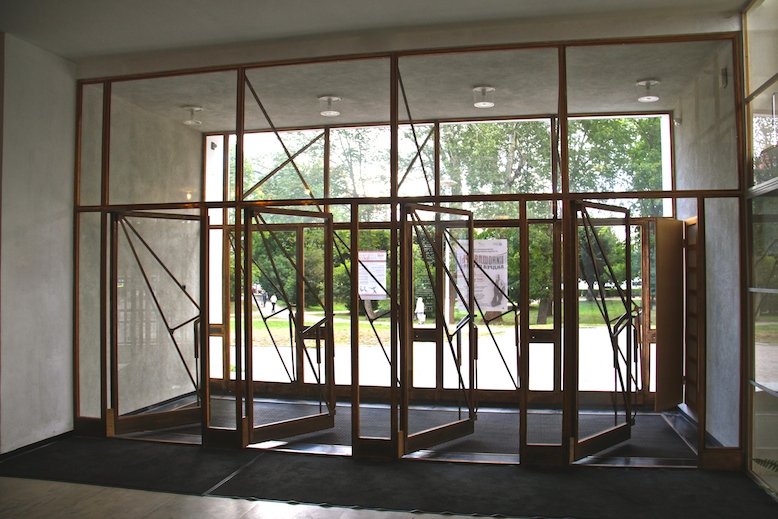today, it is my great pleasure to share with you that I have finally visited the Aalto Library in Vyborg! After seeing the interior of the Finlandia Hall, this has been the missing puzzle piece for me, the remaining Aalto building that I wanted to see for so long and one of the key works that defined Aalto as an architect. At the same time I am also proud to announce that I have now visited all Aalto buildings ever designed and built outside of Finland. Altogether I have visited 18 Aalto sites and traveled to 10 different countries starting in 2012 when I visited first Aalto buildings in Estonia, Denmark and Iceland followed by Germany and my U.S. Aalto Summer Trip in 2015. In 2017 I went to see an Aalto building in Switzerland followed by my European Aalto Summer Tour that took me to Aalto buildings located in Sweden, Germany, France and Italy. Visiting Russia, the tenth country in which Aalto's work has been realized made my list of foreign Aalto sites complete. Although the Aalto Library in Vyborg is the closest Aalto building to the Finnish border, arranging for visa and actually getting to Russia has for a long time appeared to me as an obstacle. The more happy I am that I finally had the chance to do this visit and I must say it was really great!
Site No. 83: Aalto Library in Vyborg / Russia (1927-35)
 |
| Vyborg Castle |
 |
| Ferry to Vyborg |
Vyborg Library was build between 1927 and 1935 and it is regarded as one of the major examples of 1920s functionalist architectural design. The building is in particular famous for its wave-shaped ceiling in the auditorium which Aalto argued was designed for acoustic reasons.
The ceiling was entirely renewed during the renovations and is once again the highlight of the building, that can be seen both from inside the auditorium as well as from the outside.
The actual library and reading rooms are located in the upper levels. What stands out here are the round ceiling windows that provide natural light to the readers and create an interesting atmosphere.

The staircase to the upper levels were the actual library and reading rooms are located.

An interesting detail are also the wave shaped handles. These were reinstalled during the renovation as they had gone missing during the decay of the library.
The library features also a significant amount of literature on the library and Aalto himself.
Another highlight is certainly the staircase that has windows to both sides, the outside and the inner lobby.

The staircase shares similarities with that of the Paimio Sanatorium, designed by Aalto around the same time as the Vyborg Library.

In addition to the upper level library and reading rooms, there is also a children's section on the lower level right behind the lobby.
Finally, from the street level the newspaper and magazine reading room can be accessed through a separate entrance.
The exterior clearly shows elements of functionalist architectural design similarities with Villa Tammekann in Tartu that Aalto designed about the same time, in the early 1930s.
With finally visiting the Aalto Library in Vyborg, a dream has come true for me. I have seen so many pictures of the building and have been following the news on the restorations closely. Now finally, as the building had been brought back to its original glory I am happy that I had the chance to visit and experience it first hand. The Aalto Library in Vyborg is certainly a must for every Aalto fan and a building you should not miss. Taking the cruise down the Saima Canal provides a nice and easy way to visit this icon of functionalist architecture while avoiding the hassle of acquiring a visa for the purpose of this visit.




























No comments:
Post a Comment